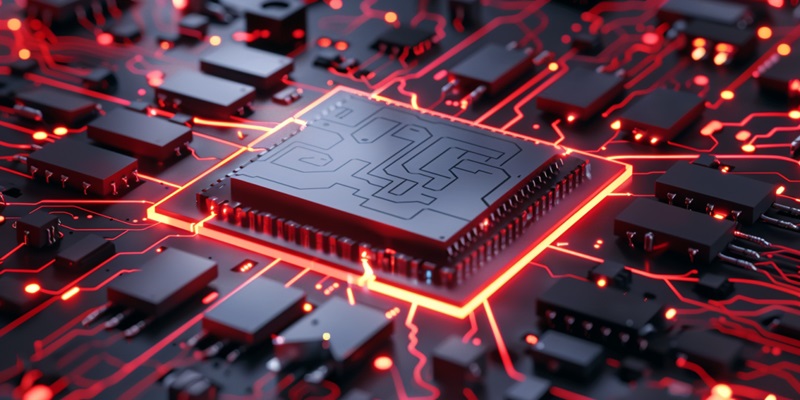With the impending release of AMD’s Zen 5 processors, the tech community is abuzz with excitement and speculation about the transformative impacts these processors will have on the future of computing. To ensure they remain at the forefront of technological innovation, AMD recently announced updates to its Ryzen AI software, now extending support to accommodate the forthcoming Zen 5 processors, particularly spotlighting the highly anticipated Strix Halo and Krackan Point lineups. AMD’s commitment to future-proofing, evidenced by this strategic software update, is a bold move that underscores the company’s dedication to maintaining its competitive edge in an ever-evolving market.
The arrival of Strix Halo is poised to mark a significant leap in processing power and graphical performance. Expected to launch next year, Strix Halo processors will feature up to 16 Zen 5 cores, paired with an impressive RDNA 3.5 integrated graphics unit housing 40 compute units. Early performance speculations suggest that these processors might outperform current-generation gaming consoles like the PlayStation 5, setting a new standard for graphics and computational capabilities in laptops and desktop PCs. The blend of high core counts and advanced integrated graphics is not just about sheer power; it speaks to a more holistic approach to computing where efficiency and capability go hand in hand. This is especially vital in an era where AI and machine learning tasks are becoming increasingly prevalent across various industries.
On the other hand, the Krackan Point lineup is slated to debut in 2025 and is geared towards power efficiency without compromising performance. This range will feature up to eight RDNA 3.5 integrated graphics units and will operate within a 15W to 45W TDP range, offering a versatile solution for both high-performance and energy-efficient computing needs. According to insights from Golden Pig Upgrade on Bilibili, Krackan Point will utilize the FP8 socket and incorporate the new XDNA 2 Neural Processing Units (NPUs) capable of delivering up to 55 TOPs performance. The focus on power efficiency is part of a broader trend within the industry to balance performance with environmental sustainability, a critical factor in the ongoing global dialogue around energy consumption and electronic waste.
Enhancing AI and Machine Learning Capabilities
One of the most significant aspects of AMD’s Zen 5 processors lies in their enhanced AI and machine learning capabilities. The expanded Ryzen AI support now includes multiple processors outside the next-gen lineups, showcasing continuous adaptation and improvement. The implementation of advanced AI functionalities in the Zen 5 architecture positions AMD at the cutting edge of a shift towards more intelligent and adaptable computing systems. As AI and machine learning become central to operations across various sectors, AMD’s advancements will provide the necessary computational power and efficiency to support these complex tasks.
This broad support highlights AMD’s commitment to making AI accessible and powerful for a wide range of applications, from consumer laptops to enterprise-level servers. The integration of next-gen NPUs is a key component of this strategy, designed to deliver substantial AI inference performance improvements. Users can expect faster, more efficient processing of AI workloads, which will likely lead to advances in fields such as data analytics, natural language processing, and real-time decision-making systems. In essence, AMD is not just keeping pace with the current trends; it is setting the stage for the next wave of AI-driven innovation.
A Holistic Approach to Future Computing
The tech community is abuzz with anticipation as AMD prepares to release its Zen 5 processors. To solidify its position as a leader in technology, AMD has updated its Ryzen AI software to support the upcoming Zen 5 processors, specifically highlighting the Strix Halo and Krackan Point lineups. This forward-thinking software upgrade showcases AMD’s commitment to staying ahead in a rapidly evolving market.
The Strix Halo processors, expected next year, promise a considerable boost in processing and graphical performance. These processors will boast up to 16 Zen 5 cores and an RDNA 3.5 integrated graphics unit with 40 compute units. Early projections suggest they could outshine current gaming consoles like the PlayStation 5, setting new benchmarks for laptops and desktops. This combination of high core counts and advanced graphics illustrates a balanced approach to weights power and efficiency, which is crucial as AI and machine learning become more prominent.
In contrast, the Krackan Point lineup, debuting in 2025, focuses on power efficiency without sacrificing performance. Featuring up to eight RDNA 3.5 graphic units, these processors will operate within a 15W to 45W TDP range. Information from Golden Pig Upgrade on Bilibili reveals that Krackan Point will use the FP8 socket and the new XDNA 2 Neural Processing Units (NPUs), delivering up to 55 TOPS of performance. This emphasis on power efficiency aligns with the industry’s broader trend toward balancing performance and environmental sustainability, addressing concerns about energy consumption and electronic waste.

